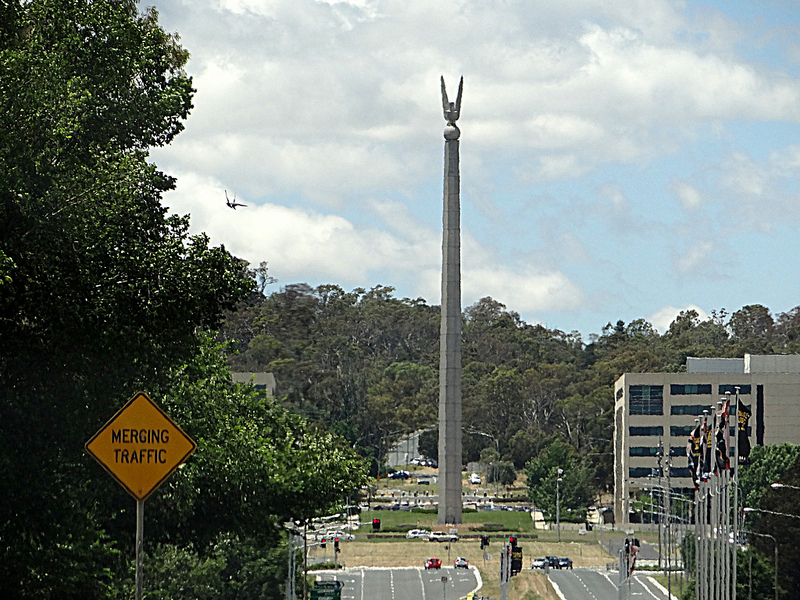 New governments always rethink the machinery of state. The main aim is to make better decisions than the last lot—if only principally to retain government at the next election! So, in the field of national security and defence are there any problems that the new government should try to avoid?
New governments always rethink the machinery of state. The main aim is to make better decisions than the last lot—if only principally to retain government at the next election! So, in the field of national security and defence are there any problems that the new government should try to avoid?
The big one that everybody (and here) seems to agree on was the disconnect between ambition and funding—not just in defence, but elsewhere in government. For several years, big new schemes were ardently advocated, simultaneously with rising concern over declining revenue sources. A certain level of incoherence seemed inbuilt.
This was further evident in the incomplete white papers. The Asian White Paper glossed over hard power while the 2013 Defence White Paper focused solely on it, while seemingly unaware of the Asian White Paper’s new directions. The National Security Strategy’s four objectives, seven ‘key risks’ and eight ‘pillars’ read like a laundry list of issues composed from the bottom up. It seemed the several departments involved all contributed some items but, while every player then got a mention, the whole seemed less than the sum of the parts. The common problem again was incoherence. This wasn’t joined-up thinking.
If incoherence is a fundamental problem, what can be done? The key decision-making body is the National Security Committee of Cabinet (NSC), which is principally supported by the National Security Adviser (NSA) and associated staff. The NSC works at the grand strategic level across the whole-of-government and takes a whole-of-nation view. In contrast, the strategic level is where the individual departments work, and is much more narrowly focused on their own turf. And the NSC decides not just how to apply national power but also how to develop it. Treasury, for example, might look deeply at macroeconomics but doesn’t plan for how the capital generated will be used to develop national power, or how it will be applied. Only at the NSC level are decisions made that combine developing and applying national power.
The present support mechanisms for the NSC work from the ground up, as individual departments push ideas forward for consideration. Each department plays to its own strengths and advances agendas based on its narrow perspective. This limited view is inevitable and proper as no line department likes to transgress on others, or has the remit to. The NSA fits in as a networker (PDF) that coordinates departmental inputs and advice. But there’s a real danger of the strategies developed simply being compromise, lowest common denominator ones that reflect departmental ‘stovepipes’.
Equally of concern, the time-constrained NSC members effectively have to devise the grand strategies themselves from the fragmentary departmental contributions. The departments pushing ideas forward don’t consider or offer complete, joined-up options at this level. This means new political decision-makers have to teach themselves how to operate at the grand strategic level while on the job. This may explain the phenomenon that Graeme Dobell highlighted: new governments take a few years before they’re fully effective in the national security and foreign affairs arenas.
There’s another way. For many reasons the departments can’t change but the NSA easily could, as the Americans show. A solution could be a more purposeful NSA, with a staff that’s charged to take a whole-of-nation view, consulting widely within and outside the bureaucracy, with an outcome focus that sets out to offer the NSC a range of viable alternatives for consideration. In being concerned about outcomes, the NSA and staff would focus on the actual practicalities of real-world implementation. What options are practical and affordable, and what are the most effective and efficient national security strategy alternatives?
This top-down approach would combine centralised direction with decentralised execution, bringing coherency across the whole-of-government, in which the various departments work together towards agreed objectives within a common strategic framework, avoiding working at cross-purposes. It’s crucial to take full advantage of the departments’ fine-grained knowledge and high levels of expertise in their specialised areas. And feedback loops that inform the NSC and keep the grand strategies evolving to meet emerging conditions are essential. The best results would be from combining the top-down and bottom-up approaches—not ignoring one completely.
In practice the NSA might canvas widely across government, the private sector, think tanks and academia to develop three or four national security strategic options for the NSC to consider. NSC might then choose one, instructing individual departments to work within that construct and to devise appropriate lower-level implementation strategies. Some departments would work on applying national power, some on developing it, but all would work coherently towards the NSC defined grand strategic objective. (To put illustrative meat on this, imagine the process outlined here applied to an earlier post of mine on grand strategy and China.)
Across all this there’d be feedback loops, where the departments involved pushed subject matter expert advice upwards. This advice, combined with changes in the international environment, would lead to modifications to the grand strategy chosen and, in time, for new grand strategies to succeed the existing one.
This approach is both careful and incremental; careful in that fully informed decisions are taken, and incremental in that policy evolves as circumstances change. It’s time to remake the NSA office.
Peter Layton is undertaking a research PhD in grand strategy at UNSW, and has been an associate professor of national security strategy at the US National Defense University. Image courtesy of Flickr user Ian Sutton.

